advocacy
It’s time to get clear on a language strategy for your child so that you can consistently practice language in your home and watch your child’s communication soar in less time!
Welcome!
I want to show you how to build better language skills at home so you can also parent with clarity and confidence!
Categories
hearing loss
sensory activities
sign language
1:1 Language Coaching
These are the kinds of resources that you will find on my blog!
Happy reading!
Quick and Easy Water Activities for Kids
June 17, 2023
Water activities for kids are a fun and engaging way to beat the summer heat while spending quality time with family and friends. They are also a great sensory activity for babies 6-12 months as well as older kids.
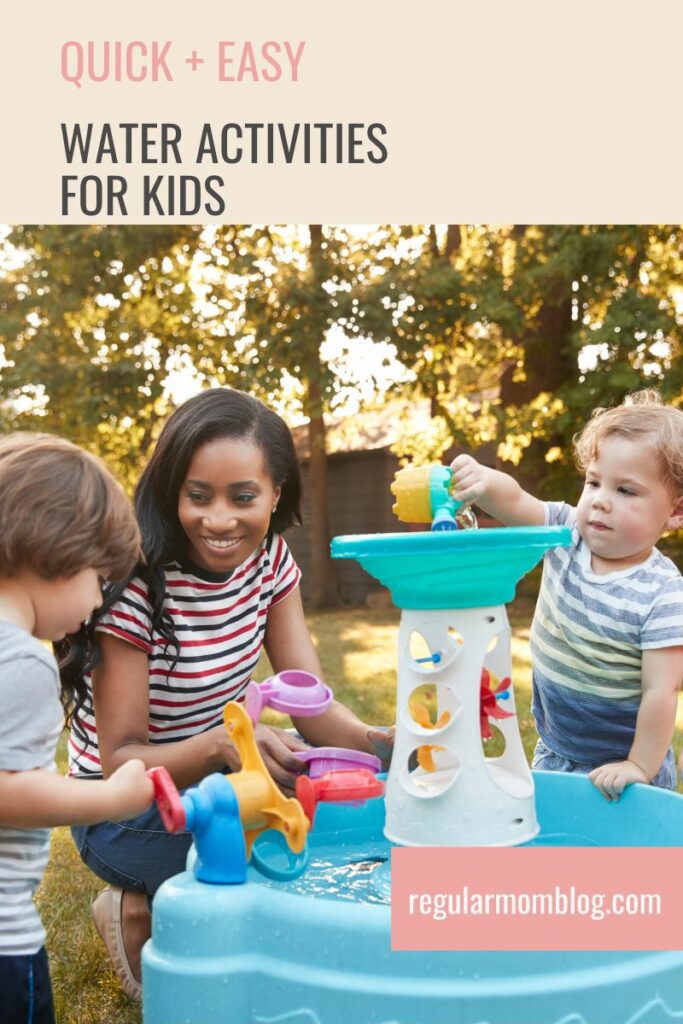
These activities not only provide entertainment, but also help with sensory development and motor skills.
When it comes to kids with hearing loss, some sensory activities may need to be modified to include different language modes. This way, kids can fully participate in the fun activity.
In this article, we will explore various water activities for kids that can be made sensory-friendly for children with hearing loss.
So, whether your child has hearing loss or not, join us to discover the benefits of water activities and how to make them inclusive for all children!
Adapting water activities for kids with hearing loss
Water activities for kids are always a blast, but what about the little ones who have hearing loss?
It’s important to modify sensory activities to include language input so that deaf/hard of hearing kids can fully participate and enjoy the fun.
When it comes to water activities, there are plenty of strategies that can make these activities inclusive for everyone.
Using visual aids and cues, like pictures or ASL signs, can help kids understand what they need to do.
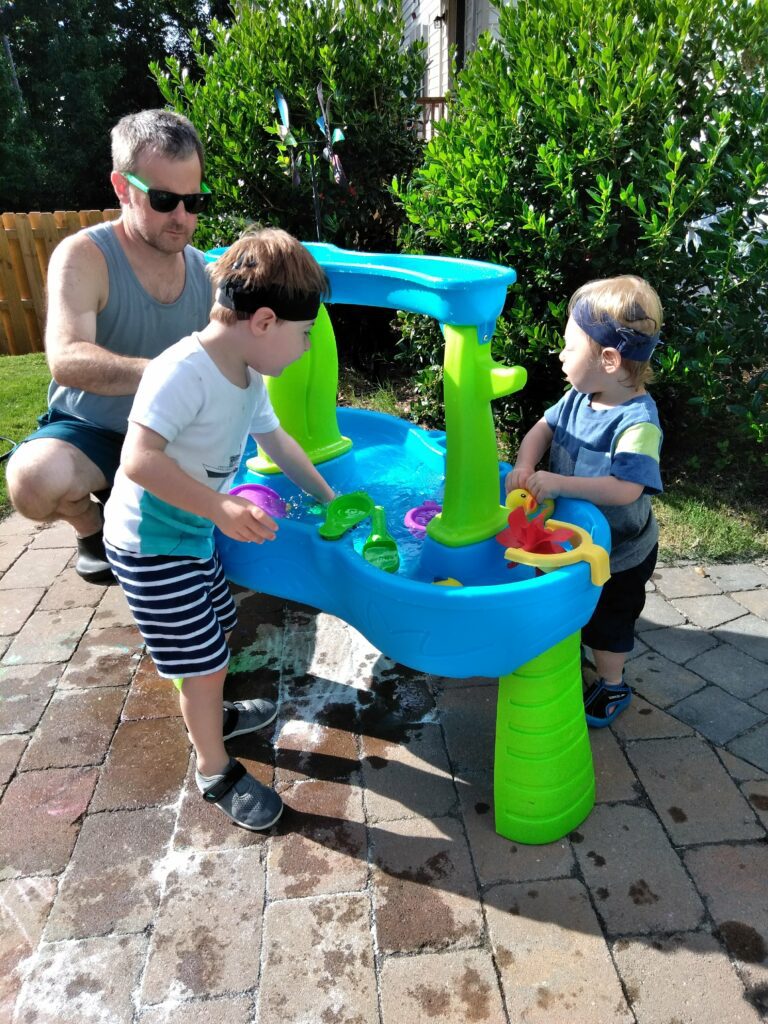
My kids have always loved water activities, and I find that they are a great way to practice speech goals in our daily routine.
I will often “play” with them and input both words and ASL signs like “wash”, “dry” and “wet”. There’s also usually a chance to practice the phrase “uh oh” because things get a little messy sometimes!
With a few little adaptations, water activities can be enjoyed by all kids. No matter what their abilities may be.
Below are some water activities for kids that can be enjoyed when the weather heats up!
Wash and Dry water activity
This activity is so fun for kids because it’s really two activities in one! Kids can wash items, and then take the time to dry the items off.
This activity is really simple. It’s a water activity that I learned from Busy Toddler, who gives parents steps to set up a toy washing station.
Just get a deep bin and fill it with water. Get any toys from your house and put them in the bin for the kids to wash.
Some of our favorite toys to wash at our home are dinosaurs and all types of vehicles!

You can also add pom pom balls and give your kids some spoons and cups to scoop the balls into different containers. This is a great activity to practice fine motor skills, and even input the words “scoop” and “pour”.
I even give my kids brushes and wash clothes to really get to work!
After they are done washing, you can set all of the toys out and have them dry the toys off.
Pro tip: I always put towels under the washing bin because my kids get a little messy with splashing the water!
On a nice day during the summer I move this bin outside so that kids can wash outside. However, on rainy days this can be adapted for indoor play.
Water table activity
A water table is a great way to keep your kids both entertained and cool on a hot summer day!
It’s also so simple to get started! Just grab some materials like a plastic bin, buckets, cups, and of course, water.
Next, fill up the bin with water and let the fun begin!
We started using a water table when my kids were 18 months old. I wanted to keep cool on a hot day but I didn’t always want to go through the process of taking kids to the pool.
My kids have loved this water table for years!
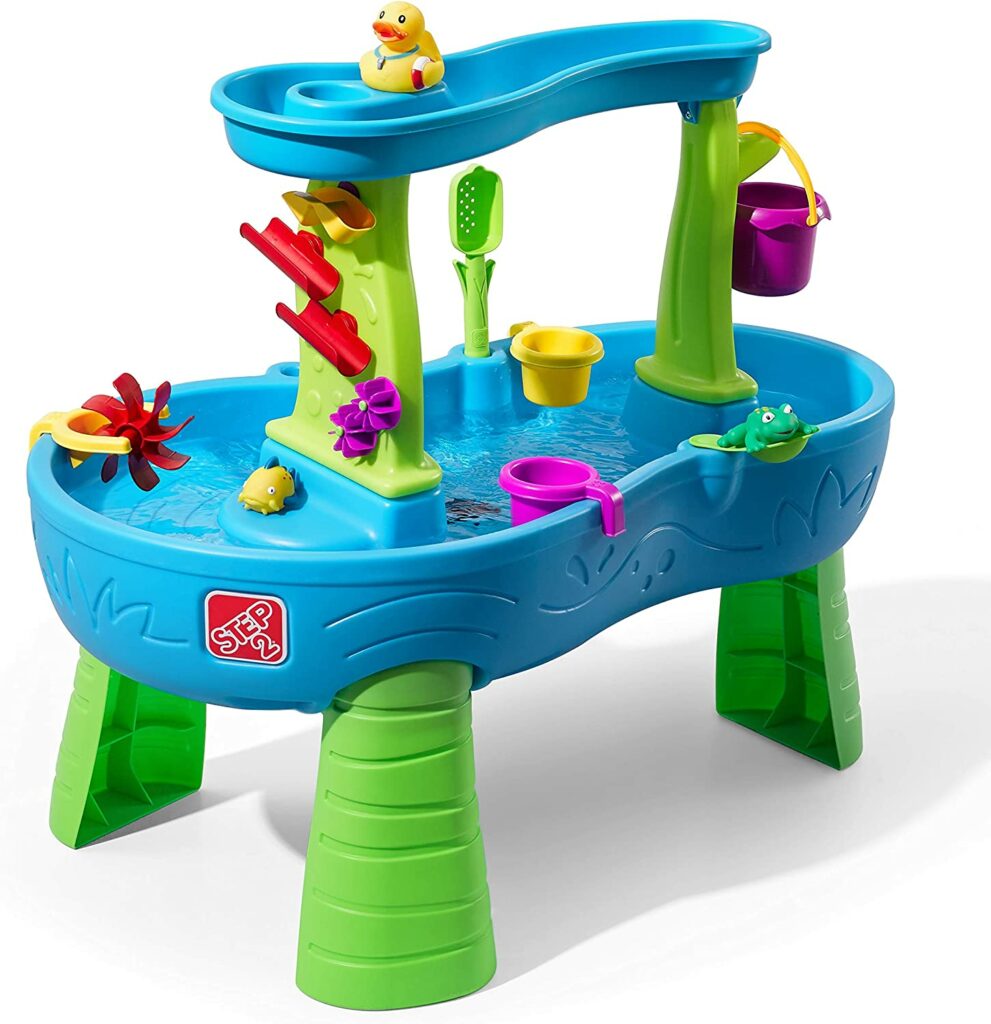
The water table comes with fun items for kids to scoop and pour. Plus it makes a little waterfall if you pour water into the top. My kids love the sensory input of feeling the water drip down from the waterfall!
Kids can use the buckets and cups to pour, splash, and experiment with water play and water transferring.
This activity not only keeps them engaged, but it also promotes sensory development and hand-eye coordination.
Sponge Water Bomb Activity
FYI, this is a super fun activitiy but your kids will need either their swim suits or clothes that they can get wet!
The sponge water bomb will definitely cool everyone off a little bit during the summer!
It’s really simple as well- just grab some sponges from your local store and cut them into smaller, rectangle pieces.
Put the sponges in a bucket of water, and let your kids soak the sponges and then toss them!
If you don’t want your kids tossing at each other, have them toss at an object.
At a fence, through a hula hoop, or set up some empty water bottles and challenge your kids to knock down the bottles with the wet sponges.

This activity provides fun sensory input with the water and feeling of the sponges. You can also input spoken language and ASL signs like “go!”, “throw it!” and “wet”.
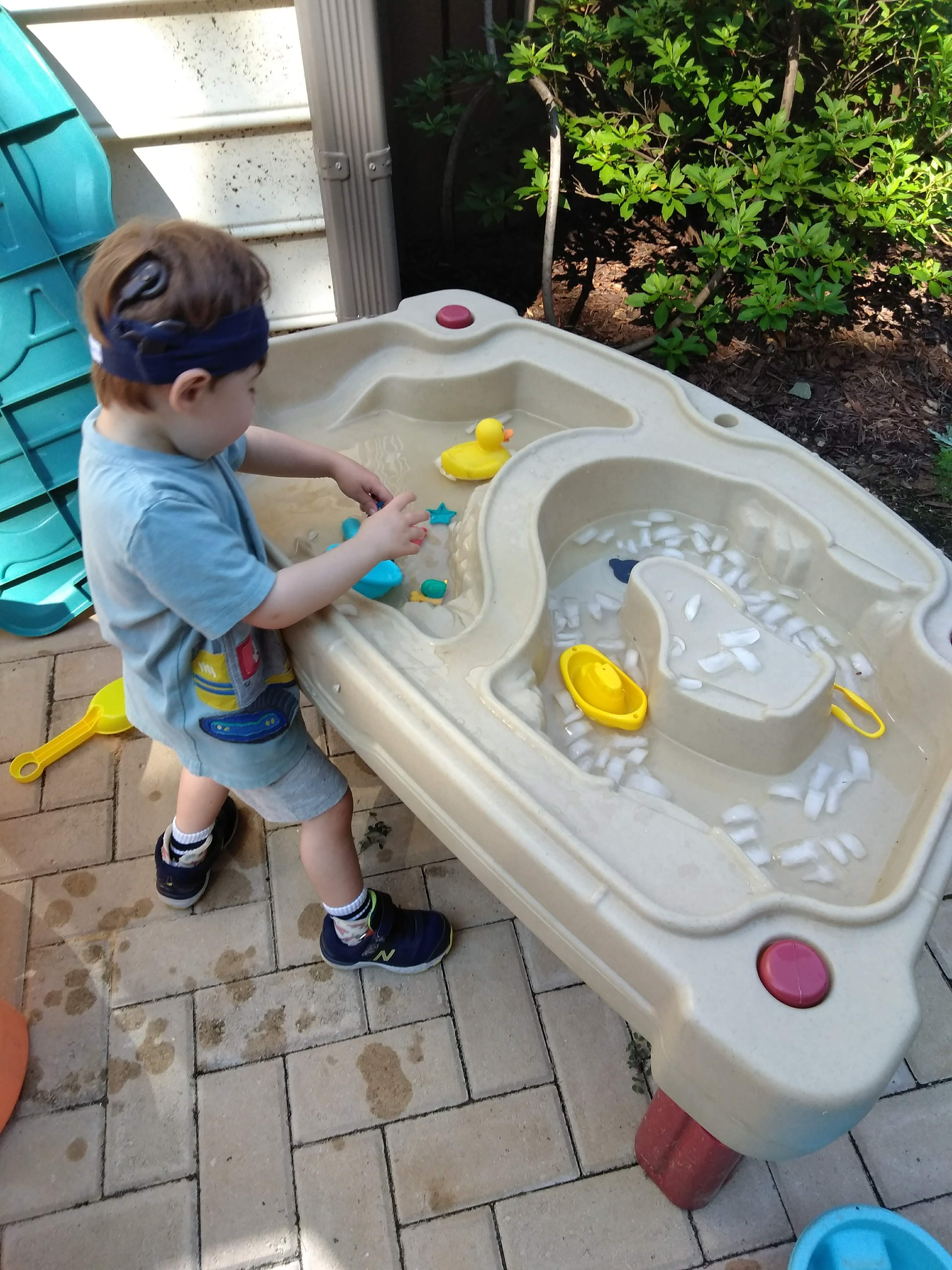
Water activities are a fun and engaging way for kids to explore their senses and develop important skills.
By adapting water activities for different needs, we can ensure that all children have the opportunity to participate in sensory play.
Visual aids and materials that they can feel can all be used to make water activities more accessible for kids with hearing loss.
It’s so important for our kids that we continue to prioritize the inclusion and adaptation of sensory activities for children of all abilities to support their overall development and well-being.
Don’t forget your free Sensory Play Guide!
More Resources
Creative Bubble Activities for Kids
Sand Activities Sensory Play for Kids
This post may contain affiliate links. I may earn a comission when you click on the links at no additional cost to you. As an Amazon Affiliate I earn comission from qualifying purchases. I only recommend products that I would use myself, and all opinions expressed here are my own.
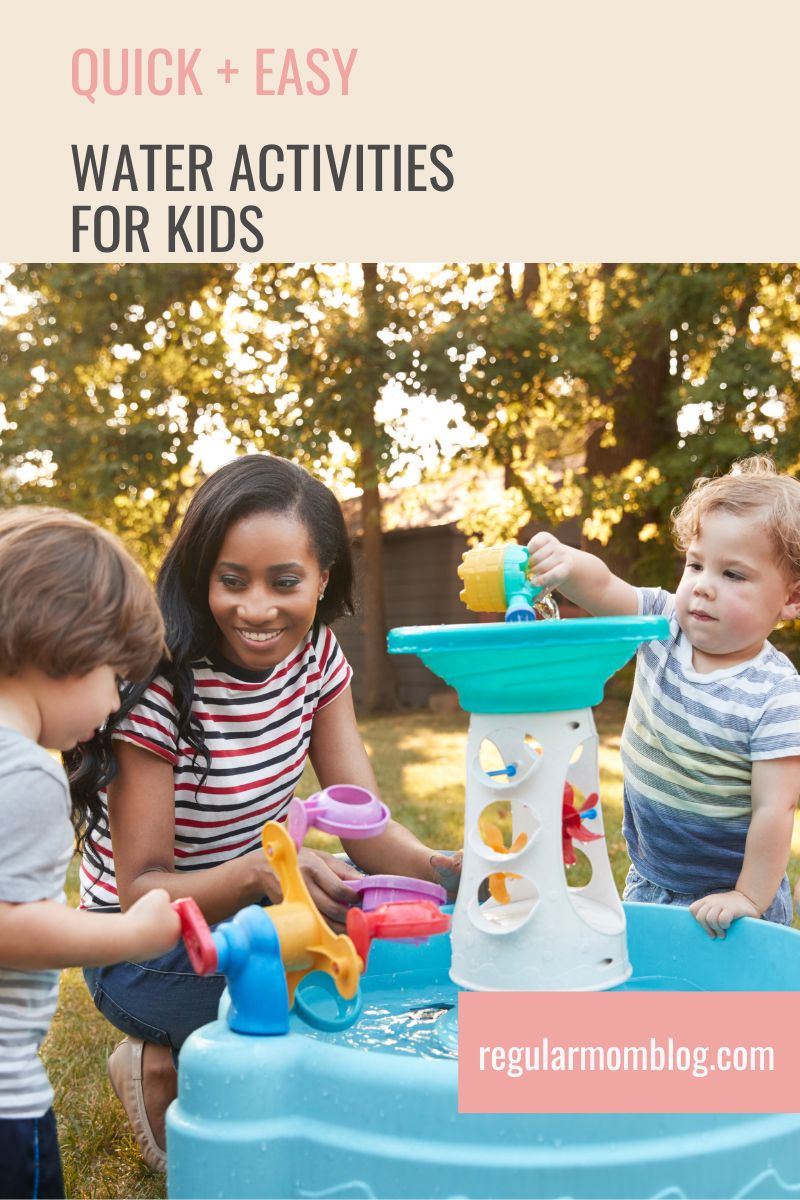
tell me more!
tell me more!
@alemerinobranding.co
DESIGNED BY: ALE MERINO BRANDING CO.
COACHING
Navigation
PODCAST
ABOUT
HOME
Legal
PRIVACY POLICY
TERMS & CONDITIONS
Let's connect
EMAIL hello@raisingdeafkids.com
BLOG